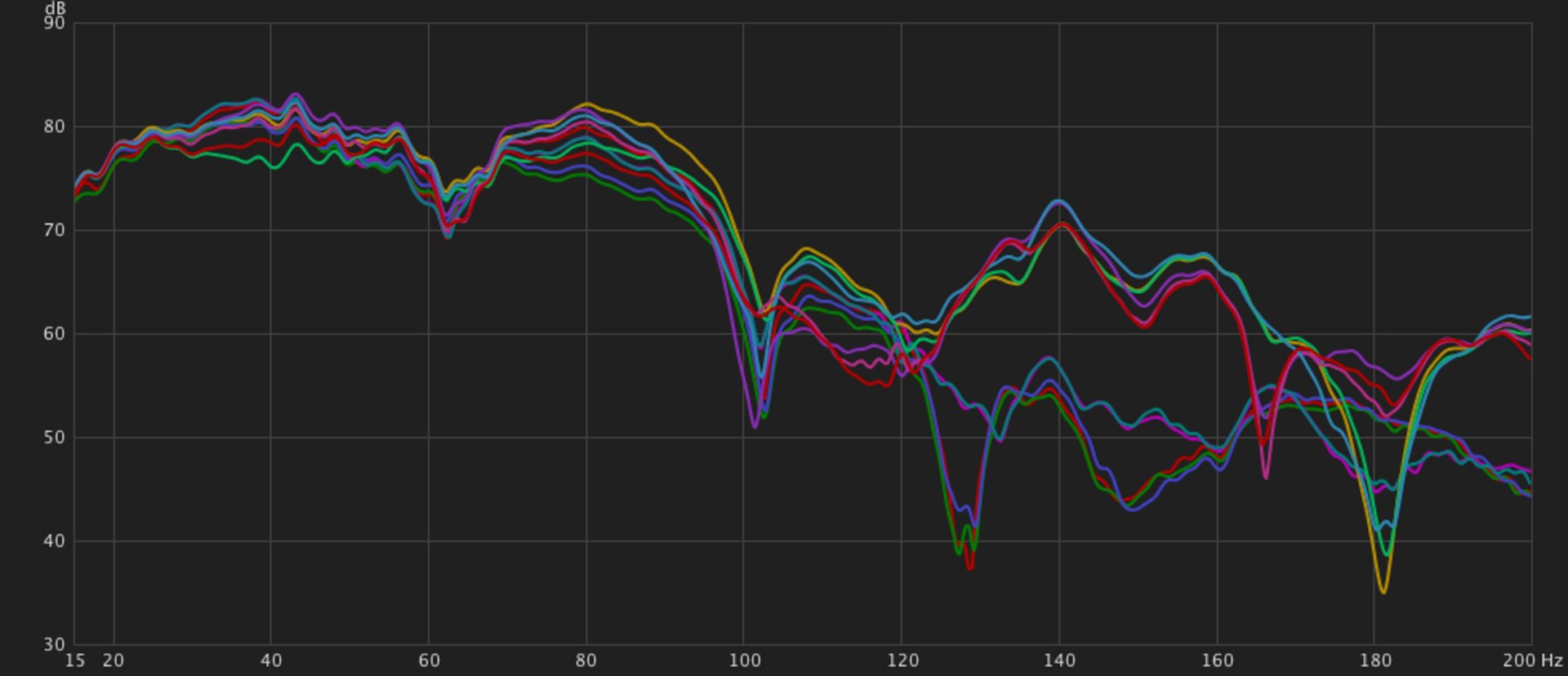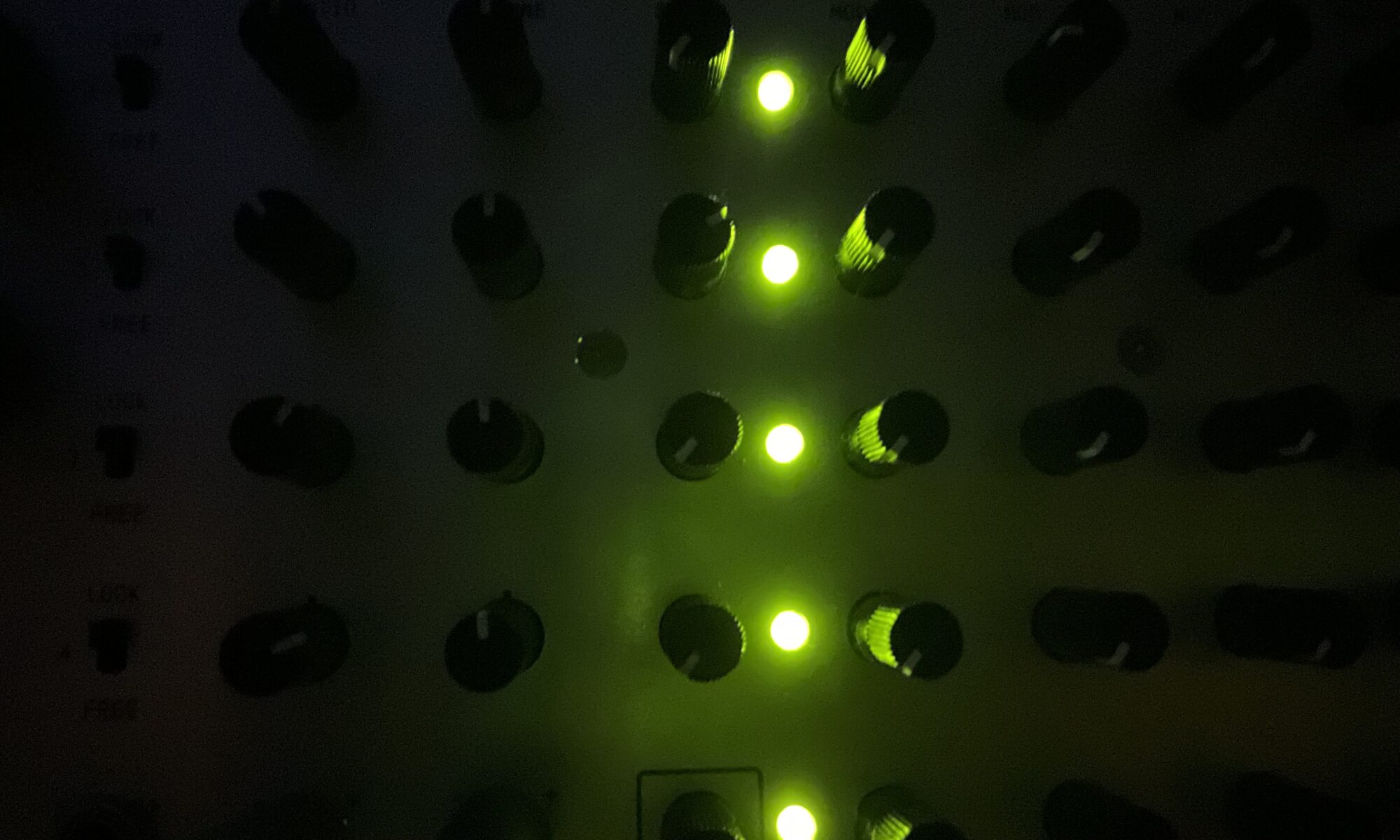Hi, my name is Chris, and I’m a chordaholic.
Lately I’ve been in a polyphonic mood, attempting to find evermore methods of creating chords and chord sequences with the modular synth. Using a DAW for this sort of thing is child’s play, but in modular synthesis, creating polyphonic chords isn’t a straightforward task most of the time. Most oscillators can only output one pitch at a time, and using multiple oscillators can create timbre mismatches. Tuning 4 or more oscillators to the same pitch while not suffering from pitch drift over time is a chore and a half. Sequencing chords in a traditional modular sequencer can be a mission rife with potential problems, and you don’t always want the repeating uniformity of a sequence, but something more organic. In short, modular synthesis is traditionally a monophonic enterprise, with only a small handful of monophonic voices being used together. A melody, a bass line, perhaps something else to fill in space, and some effects to create a stereo space. Full on chord generation isn’t common because it’s a tedious exercise that generally requires a lot of gear and even more patience. But over the last couple of years this is beginning to change. Although there have always been ways to create chords and chord progressions in modular synthesis, it’s not until relatively recently that we can more easily create chords. Oscillator banks like the Xaoc Devices Odessa (with its expander, Hel), Humble Audio Quad Operator, and RYK Modular Algo, and chord sequencers like the NOH-Modular Pianist make composing with chords on the modular a much more efficient and simple process.
In a previous patch I used the very excellent (and recently updated) NOH-Modular Pianist to create chords that were triggered by an irregular chaotic gate pattern. Although I am generally psyched about how that patch turned out, there are still a couple spots of ugliness that appear due to a bad match of back-to-back chords in the progression. On their own they sound fine. But once smeared out by the delay, FFT resynthesis, and reverb, there is some clashing that happens, creating some ear-cringing dissonance. I wanted something cleaner, and I didn’t want to have prescribed chords, but something that could change organically with a bit of modulation, without the worry of a spicy note peeping its ugly head in. Enter Quad Operator.
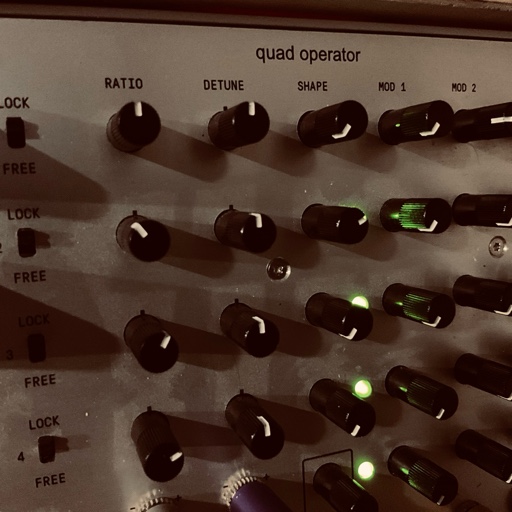
The Humble Audio Quad Operator is a bank of 4 oscillators that can be tuned to harmonic and subharmonic ratios of a base pitch. Tune the base pitch to your liking, then simply adjust the ratios of each operator, and you have oscillators that are all harmonically in tune. Patch in a single v/oct signal, and all 4 operators will move along in harmony. The Quad Operator is primarily designed as a the ultimate FM oscillator with any traditional FM algorithm possible, along with any other combo of modulator/carrier you can imagine. But with each operator being independent with its own output (both in a mix and independently), using it as a complex chord generator is a very happy side benefit. Input a single v/oct signal, output always-harmonically related chords. Add in some modulation of a couple of the operator’s ratios, and not only will the chords always be harmonically relevant, they’ll also quite often be different (even if the base of the chord is the same). For modulating the ratios I used both the Nonlinearcircuits Stochaos and the Auza Wave Packets.
There are lots of methods for getting a nice v/oct signal. Sequencers are the obvious solution, but with a quantizer any signal can be a used for pitch. S&H is extremely popular, but random pitch is only slightly less boring than patterns repeating themselves over and over in the exact same way. One solution is to use LFOs alongside triggers to create melodies or arpeggios. Envelopes work great too. But I wanted something a smidge different. LFOs and envelopes repeat themselves by nature. Unless modulated, an LFO or envelope is the same up and down every time. This regularity can be mitigated by irregular triggers, but then it starts to veer towards random, which isn’t really what I’m after. Enter chaos.
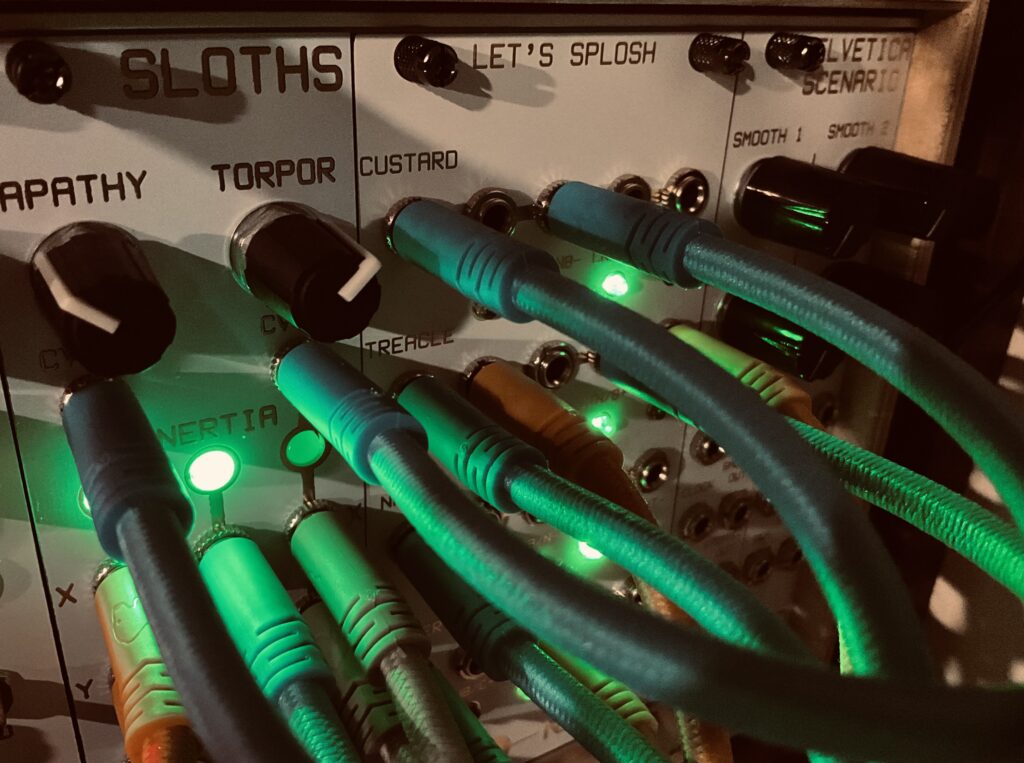
In my post, Chaotic Gates, I explained how chaos signals are regular-ish. They take the same general path on each pass, but some unknown irregularity in the feedback path will shift it off course in a non-regular way. These signals are kind of regular, but enough differences come about that there are always surprises. I mostly use chaos as a modulator of some kind. Opening and closing filter cutoffs or wavefolders, slowly modulating level, timbre, or some other facet of a patch. Today I would use it for pitch.
In most circumstances I would use triggers alongside my CV input with a quantizer. Send off a trigger, and whatever voltage is present at the quantizer’s input is sampled, quantized to the nearest note of your chosen scale, and output to the v/oct input on your oscillator. But some quantizers can function without a corresponding trigger, sensing voltage changes, and quantizing automatically once it detects a change large enough to be a separate note in the scale. Quantermain, the quad quantizer algorithm on the ever-useful Ornament&Crime, has this capability, and I decided to give it a whirl. It should be easy enough. Shove in a chaos signal, get quantized pitch CV on the output. And by and large, it was that easy. I knew I wanted fairly slow chord changes, so I needed a slow(er) moving chaos signal. After a bit of attenuation of the chaos signal to reign in the range, I was getting exactly what I wanted. Irregularly moving chords that shift at irregular speeds and that have irregular movement both up and down.
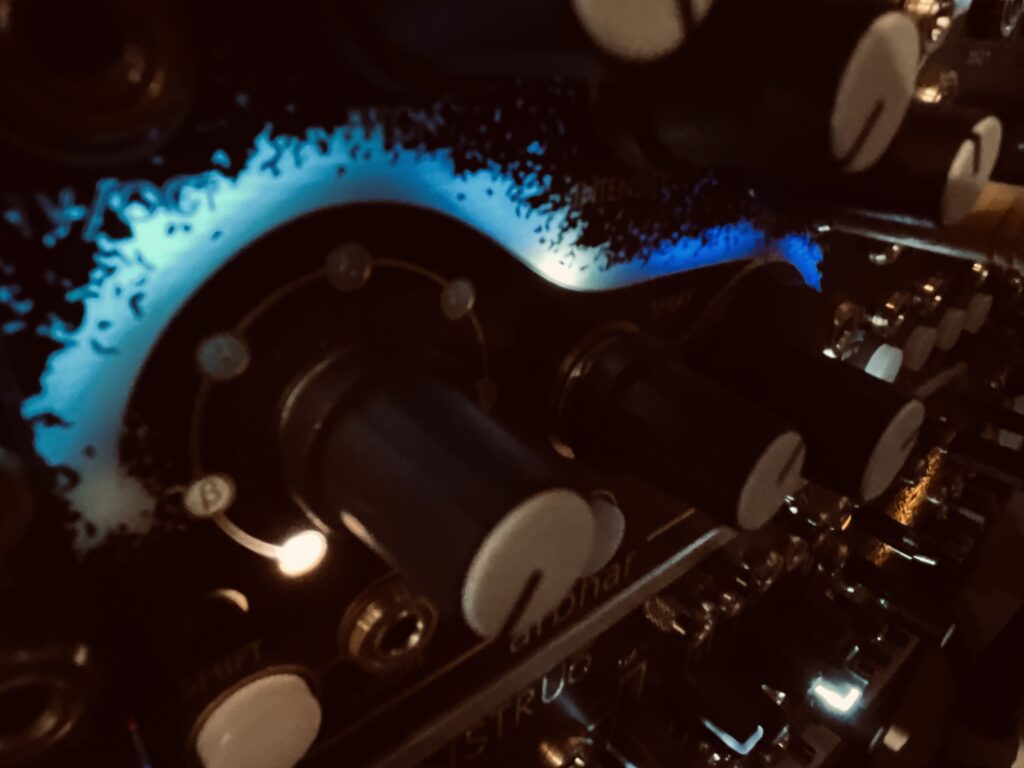
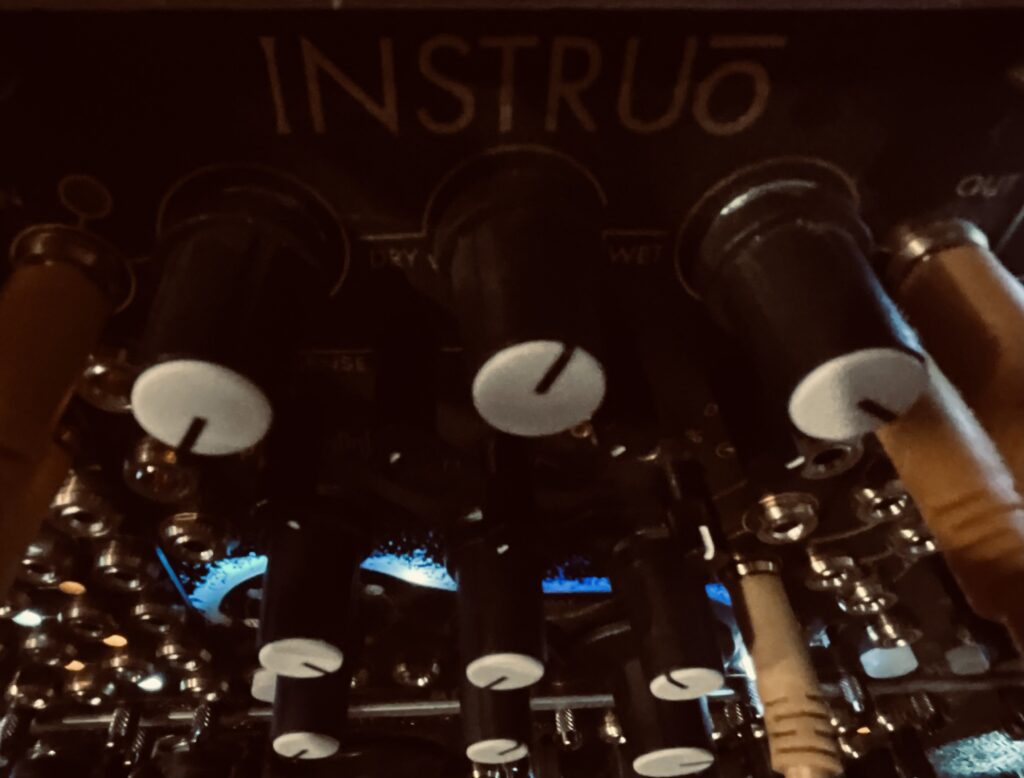
But chords themselves, cool as they are, need embellishment to be interesting. For effects, I sent the chords, via the stereo matrix mixer, to the Qu-Bit Nautilus for some smearing with low pass filtered delay, before going to the Instruo Arbhar. My initial plan was to have some shimmery granular action floating on top of the chords, but I could never find what I was hoping to get. Instead I found a happy accident of harmonically relevant dancing grains that moved to a rhythm.
These dancing grains, although not at all what I envisioned when I set out on this path, turned out being perfect, giving a sense of life inside the thick chords. Like minnows in a lake, or lightning bugs in the night.
Enjoy!
Modules Used:
Nonlinearcircuits Triple Sloth
Nonlinearcircuits Stochaos
Auza Wave Packets
Humble Audio Quad Operator
ST Modular Sum Mix & Pan
AI Synthesis 018 Stereo Matrix Mixer
Qu-Bit Electronix Nautilus
Instruo Arbhar
CalSynth uO_C
Knob Farm Ferry
Mutable Instruments Blinds
Oto Bam
Improvised and recorded in 1 take on iPad in AUM via the Expert Sleepers ES-9.
